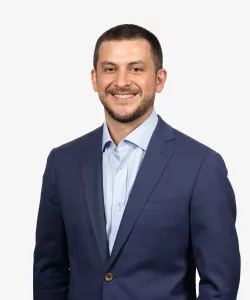US Copyright Office Issues Registration Guidelines for Works with Material Created Using AI Technology
The Copyright Office indicated that material created using AI may be copyrightable if a human author sufficiently controls the creative process.
Less than a month after denying copyright protection to AI-generated illustrations in a comic book, the US Copyright Office issued a statement of policy last Thursday to provide guidance on copyright protection of works that contain material generated using AI assistive technology. Notably, the guidance leaves open the possibility that material generated using AI may be eligible for US copyright protection if there is sufficient creative human involvement and control.
The term “author,” which is used in both the Constitution and the Copyright Act, excludes non-humans. The issue of human authorship, previously sensationalized by a monkey’s selfie in 2008, has popped up more and more as technology, and specifically AI technology, has developed past the need for human involvement in the creation of songs, illustrations, film scripts, and even Instagram personalities. The natural result of this rapid progress is a desire by creatives to enjoy copyright protection for their AI-assisted works, and the Copyright Office is providing guidance on how to do so.
On February 22 of this year, the Copyright Office ruled that illustrations in a comic book titled Zarya of the Dawn, which were created with the AI program Midjourney, were not copyrightable because they lacked sufficient human authorship. The Copyright Office did note that the text of the publication, which was written by Kristina Kashtanova, was still covered by copyright protection, but her use of Midjourney to create the illustrations rendered the drawings themselves unprotected. When Kashtanova originally applied for copyright protection in September 2022, she did not disclose that the illustrations were made by an AI image generator.
While the new policy statement reinforces the longstanding principle that copyright can protect only material that is the product of human creativity, it does note that works created with the assistance of AI technology can be protected with sufficient creative human involvement. The Copyright Office gives the example of a visual artist using Adobe Photoshop to edit an image, noting that such artist remains the author of the modified image.
Determining whether there is sufficient human creative control in the development of a work will be determined by the Copyright Office on a case-by-case basis. The policy statement emphasizes the need for complete disclosure in a copyright application of the extent to which AI technology aided in the creation of a work. Applicants are to use the Standard Application, identify the human author, and provide a brief statement describing the human author’s contribution to the work.
The guidelines also provide that applicants who have already submitted applications for works containing AI-generated material should check that the information provided to the Copyright Office adequately disclosed that material. If it did not, those applicants should correct their information so that the registration remains effective.
The Copyright Office noted that it may issue additional guidance in the future related to copyright issues implicated by AI technology. The Copyright Office also launched a new initiative last Thursday to examine the copyright law and policy issues raised by AI, through public listening sessions with artists, creative industries, AI developers and researchers, and lawyers. The sessions will focus on literary works, including print journalism and software; visual arts; audiovisual works; and music and sound recordings. Later this year, the Copyright Office plans to publish a notice of inquiry soliciting public comments on a range of AI and copyright issues. In addition, the Copyright Office launched a new webpage for announcements, events, and resources related to AI and copyright at copyright.gov/ai. With the Copyright Office’s new AI initiative and a plethora of pending litigation before the courts, pressing issues involving AI and copyright are beginning to be addressed, and we will continue to monitor new developments.
The Copyright Office’s statement of policy may be accessed using this link.
Contacts
- Related Practices



